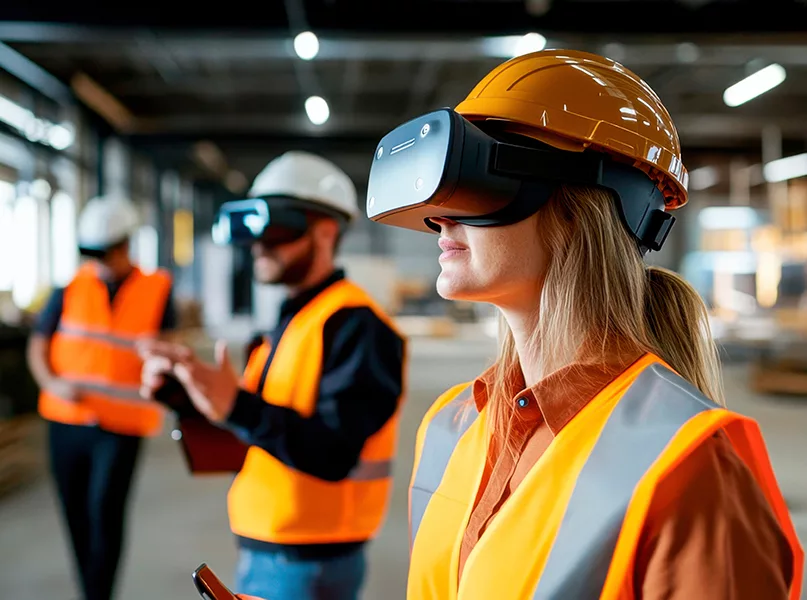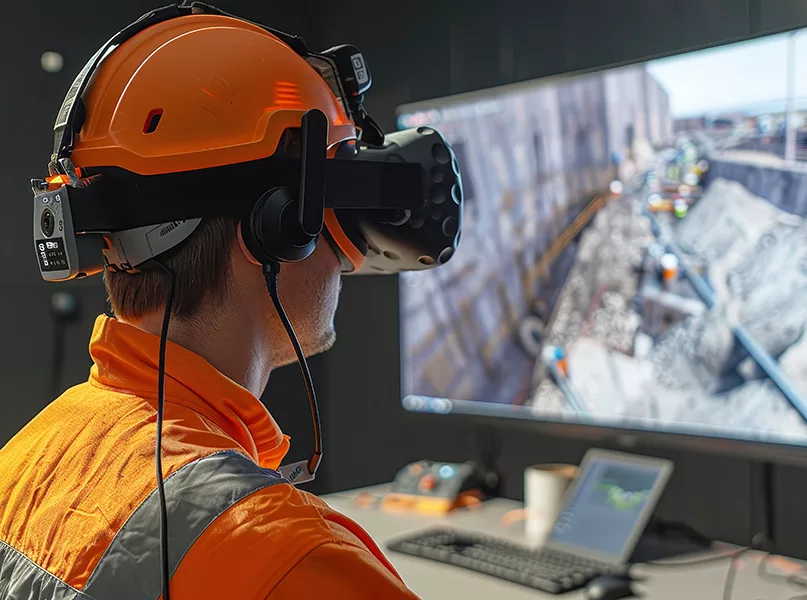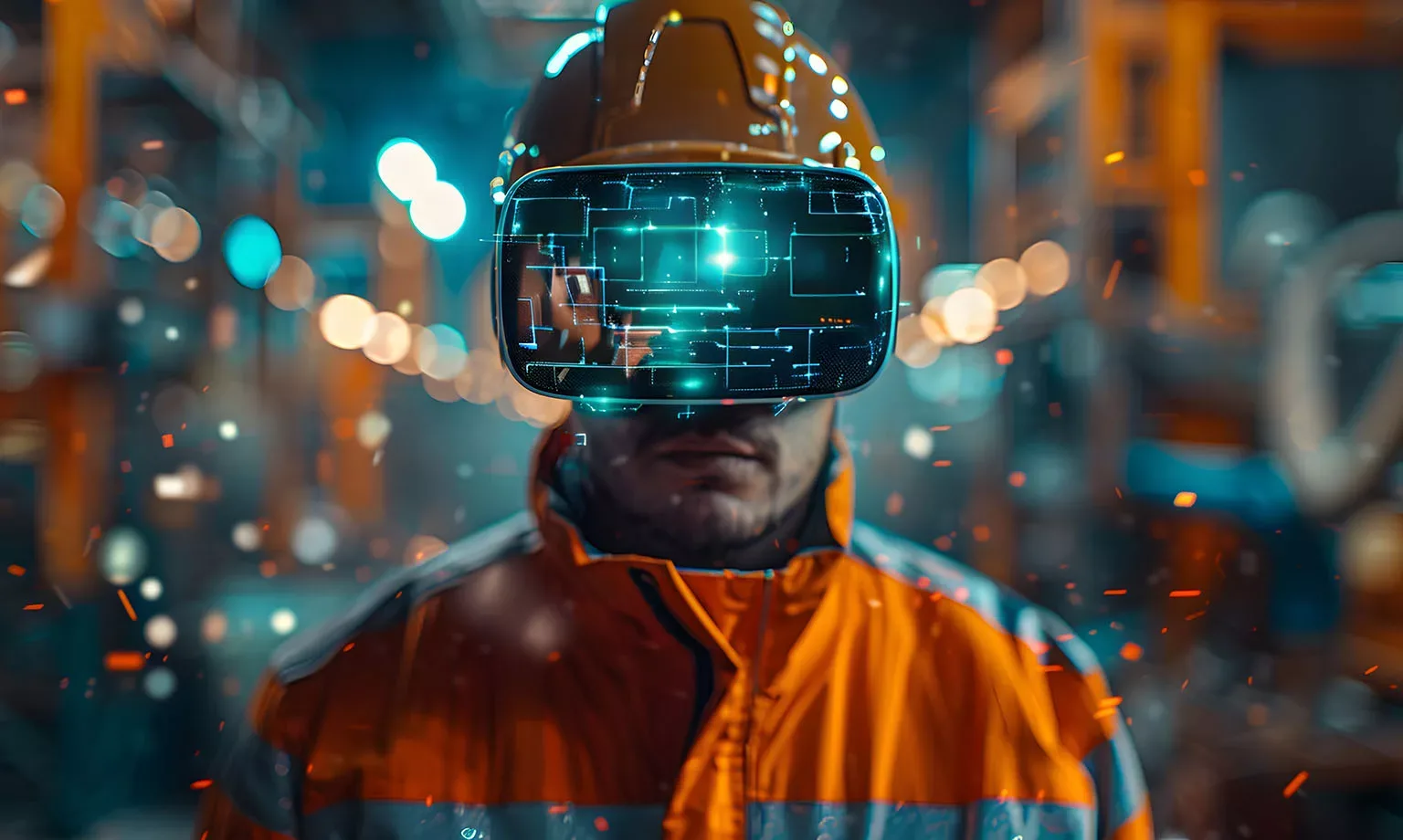As a new and impactful process revolutionises urban planning and transcends the bounds of imagination, we take a closer look at the immersive, interactive, and innovative intersection between architecture and virtual reality, a realm where physical and digital worlds converge.
BUILDING A NEW REALITY
In the ever-evolving landscapes of construction and technology, two sectors are amalgamating: architecture and virtual reality (VR).
This fusion holds the potential to transform how the industry designs, visualises, and constructs the built environment.
It has already played a notable role in various building projects worldwide, such as business centres, hospitals, hotels, and resorts.
Indeed, in the past few years, VR has become an increasingly vital tool in the construction and engineering industries, with this rapidly advancing technology significantly impacting planning and design. Importantly, it has also improved safety, as sites can be virtually explored without risk, providing a sense of reassurance and security.
As technology continues to reshape global construction, many of the latest developments are taking root across Africa. From laser scanning and 3D printing to on-site robots and small drones, these innovations have proven to deliver more cost-effective projects.
Now, VR as well as augmented reality (AR) are taking this a step further, and many companies are adopting both components to enhance efficiency and productivity.
VR creates a simulated environment that allows users to interact physically and virtually, while AR enhances this technology by superimposing visual content onto a real-time environment.
Both VR and AR provide an excellent opportunity for collaboration across different industries, inviting owners, contractors, and other stakeholders to use these technologies to envision and track a building’s progress from the initial planning stages to final delivery.
Compared to AR, VR is more commonly used in construction, particularly in building information modelling (BIM). However, recent advancements mean that the two technologies can be combined into mixed reality (MR).
This technology trend forges a promising path for Africa’s construction industry, as the dynamic market presents considerable opportunities for companies and investors alike.
Therefore, with rapid urbanisation, ongoing infrastructure development, and a strong focus on sustainability, the integration of VR and AR is influencing the future and igniting optimism and anticipation for what lies ahead.

COLLABORATIVE CREATIONS
Although VR has existed since the late 1960s as a headset, it was primarily used for mapping and video games over the following four decades.
Its growing popularity was proven in 2016 when approximately 230 companies, including Amazon, Facebook, Google, Microsoft, Sony, and Samsung, were discovered to be developing VR-related products, predominantly for the entertainment industry.
Only in recent years has this versatile technology been applied to crucial industries such as healthcare, manufacturing, and the military, which are leveraging its endless potential and possibilities. Today, it is also being used in the full construction cycle, from the initial concept through to the building and implementation stages.
Furthermore, Africa has embraced Industry 4.0, a new era defined by various technologies that combine the digital, physical, and biological realms and are reshaping economies and industries, fundamentally transforming the continent’s way of life.
With Africa’s construction landscape experiencing significant growth, the market is expected to reach new heights. This rapid development will lead to increased projects, with a substantial portion of the work occurring in cities, making it essential for infrastructure to keep pace with this expansion.
By definition, construction is a highly collaborative sector that requires teamwork from all disciplines. Visualisation is therefore essential for cooperation and communication, which VR facilitates by allowing stakeholders to interact remotely with 3D models in real time, making it easier to convey design intentions and project visions.
BIM additionally facilitates synergistic work across different sectors by enabling the simultaneous sharing of information in a standardised format.
Alternatively, VR uses computer technology to create interactive, lifelike environments, offering users an immersive experience that enhances their understanding of projects’ size, scale, and details.
PERFECT PARTNERS
Recently, a South African-based global engineering consulting firm, SMEC, used advanced technology to improve its design abilities.
One of its projects utilised VR during the design phase of the Montrose Interchange for Trans African Concession (TRAC) near Mbombela in Mpumalanga.
As the original road construction from the 1970s was unable to handle the current volume of traffic in the area, the objective was to create a new grade-separated interchange to improve free flow.
Located on the only east-west route between the Crocodile and Elands Rivers, the Montrose Interchange is expected to boost the economies of South Africa (SA) and neighbouring Mozambique and Botswana.
Because the area was challenging to survey due to limited space, SMEC’s team deployed unmanned aerial vehicles (UAVs) for drone photography and Bentley’s ContextCapture software to generate a 3D reality mesh of the site for the preliminary design.
The project combined SMEC digital engineering modelling with VR technology, an HTC VIVE Pro headset, and motion controllers. The team and the client then experienced an enhanced walkthrough or flyover of the site after the company realised that traditional strategies would not be enough to deliver the complex project.
Encouragingly, upon completion, the client determined that working in a collaborative digital environment saved around 2,500 hours of design time and an estimated ZAR2.5 million in design costs, further cementing SA’s position at the forefront of implementing Industry 4.0 across Africa’s industrial landscape.

A WORLD WITHOUT LIMITS
Technology and construction form an ideal partnership as VR allows engineers to detect and rectify flaws and potential risks by offering a 3D preview of their work. Thus, embracing this cutting-edge method is transforming the construction industry in Africa.
Indeed, many companies are leveraging VR and AR to push the boundaries of modern construction, but can these technologies be effectively applied to the African environment?
As VR and AR become more agile and are increasingly integrated into standard construction, they will gain acceptance, become more cost-effective, and deliver better return on investment (ROI), presenting exciting new opportunities for the continent’s construction industry.
The advantages of adopting this new method of operating projects are evidenced by SMEC’s client, who has praised its digital engineering modelling on the Montrose Interchange because there have been no fatalities since August 2023. This ingenuity in design approach has paved the way for VR to be applied to construction projects and smaller infrastructure solutions, such as road signs and guardrails, in the future.
Pioneering and transformative, VR, AR, and even MR offer boundless possibilities in construction, including streamlining operations and fostering productivity.
The strategic use of these technologies, combined with the expertise of specialist teams, can provide innovative solutions to address challenges and improve processes, working more efficiently to reduce costs and save lives.
































